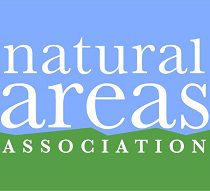Webinar
Webinar recording.
This seminar builds of the March 9, 2023 “Community-focused programs, datasets, and planning resources for wildfire risk mitigation” seminar (presenters: Greg Dillon, Eva Karau, Kelly Pohl) by focusing on how to support creation of fire-resilient communities. In particular, the presentation will highlight how the paired parcel risk and social data approach developed by the Wildfire Research (WiRē) Team supports action on private land parcels, across parcels within a community, and across boundaries to nearby public land. The WiRē Team is an established interagency research-practice team that provides wildfire mitigation and research expertise, data collection tools, and products for community wildfire education and mitigation programs.
Webinar recording.
Much of the current dialogue around mitigating wildfire risk to people and property in the United States focuses on vegetation treatments to reduce fuel loads on public lands. There is good reason for that – responsible management of lands within their jurisdiction is embedded within the mission of the Forest Service and other land management agencies. However, we can conceptualize wildfire risk to the built environment as having three primary components: likelihood of wildfire occurrence, intensity if a fire occurs, and susceptibility of an asset (e.g., a structure) to being damaged by a fire. Under this framing, treating fuels on public lands, sometimes far away from assets at risk, has a limited ability to reduce the likelihood and intensity of fire at the location of those assets, and has no effect on the susceptibility of the assets to damage. Conversely mitigation actions that have the greatest leverage on wildfire risk to built assets include reduction of fuels immediately adjacent to the asset and physical measures that can reduce the ignitability of a building. Examples of this include implementing Home Ignition Zone principles and using fire-resistant building materials. In this seminar, we will share examples of work happening within, or funded by, the Forest Service to foster these types of locally-focused mitigation actions and underscore the importance of these actions in the broader scope of the Wildfire Crisis Strategy.
Webinar recording.
The fifth webinar of the Forest Service’s Research and Development SCIENCEx FIRE week.
Looking Towards the Future
Historical and Future Fire in Temperate Rainforest of the Pacific Northwest | Matt Reilly
Assessing Wildfire Risk for Strategic Forest Management Decision-Making in the Southern US | Sandhya Nepal
Wrap-Up | Jens Stevens
Webinar recording.
The fourth webinar of the Forest Service’s Research and Development SCIENCEx FIRE week.
Modeling Risks and Tradeoffs
Wildland Fire Behavior and Ignition | Greg Dillon
Juggling Risks and Tradeoffs Toward a More Resilient Future: The Known, Unknown, Unknowable, and Unpleasant | Pat Manley & Nick Povak
Southern Forest Outlook: Fire in a Changing Landscape | Nick Gould
Webinar recording.
The third webinar of the Forest Service’s Research and Development SCIENCEx FIRE week.
Fire Behavior
Wildland Fire Behavior and Ignition | Sara McAllister
3D Time-Dependent Fire Behavior Models: What They Do and the Need for Observational Datasets | Ruddy Mell
Fire Behavior Assessment Team (FBAT) and Wildfire Monitoring | Matt Dickinson
Webinar recording.
The second webinar of the Forest Service’s Research and Development SCIENCEx FIRE week.
Fire Weather and Smoke
Fire Weather Forecasting | Brian Potter
New Technology for Monitoring Smoke Impacts | Shawn Urbanski
Smoke Plume Dynamics | Yong Liu
Webinar recordings of the Forest Service’s Research and Development SCIENCEx FIRE week.
Fire History and Ecology
Introduction to SCIENCEx Fire Week | Jens Stevens
Indigenous Fire Stewardship and Cultural Burning | Frank Lake
Fire Exclusion and Western Forest Change | Eric Knapp
A History of Fire in the Eastern US: How Humans Modified Fire Regimes through the Holocene | Dan Dey



